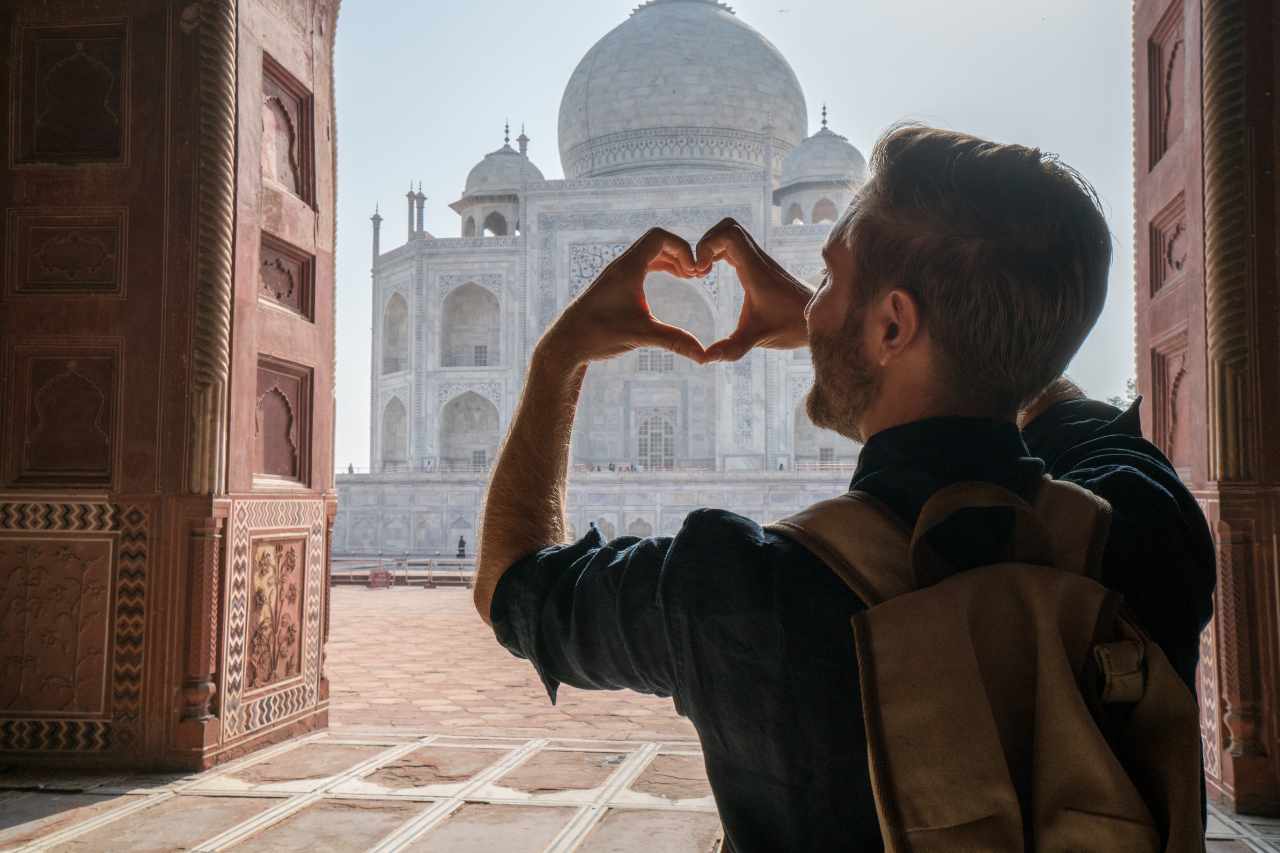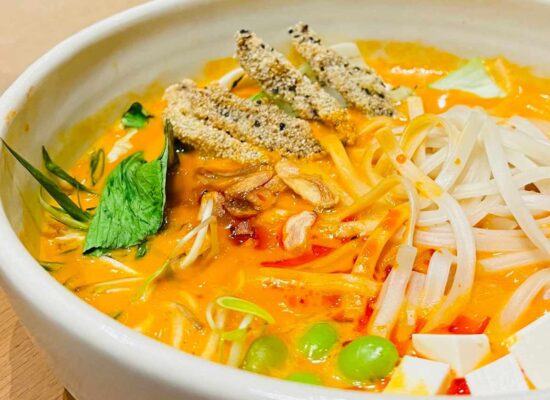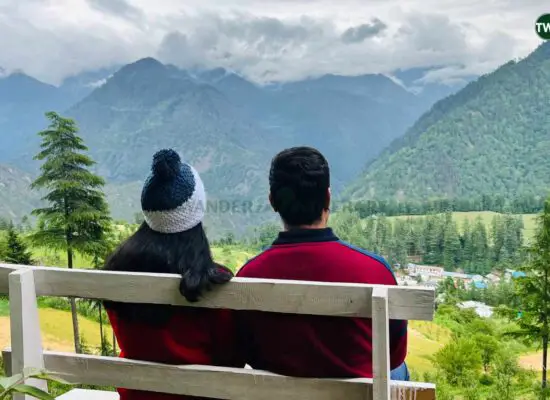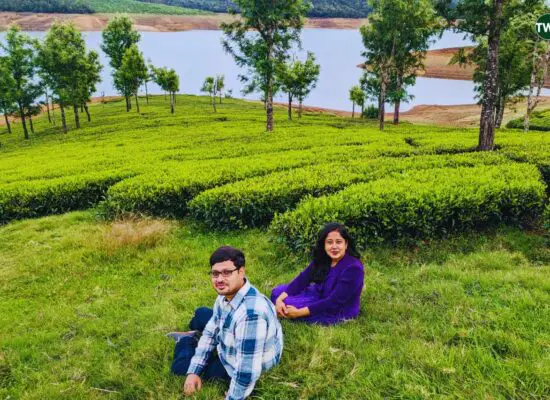Disclaimer: We are serious about content integrity and staying true to our readers. Thus, you can be assured that any article you read across our website is free of bias and is not produced by AI-platforms. Also, this post contains a few affiliate links. If you click on them to make a purchase, we may earn a small commission at no extra cost to you. Read about our editorial policies.
The Indian subcontinent is a traveler’s paradise. It attracts tourists across the globe for its breathtaking natural landscapes, rich tradition and cultural diversity.
From rugged mountains, lush rainforests, vast deserts, to the picturesque countryside, India is a dream destination for every travel lover. However, India’s commonly spoken languages often pose a challenge for foreign tourists.
With 28 states speaking their own regional languages, embarking on a complete tour of India may seem like a daunting task as a foreigner.
If this linguistic diversity is making you rethink your travel to India, fear not. We’re here to help you.
In this article, you will find a guide to the official Indian languages that are crucial for a traveler. So if you want to converse like a pro while touring the diverse states of the country, keep scrolling for a fun linguistic adventure.
Contents
How Many Languages Are Spoken in India?
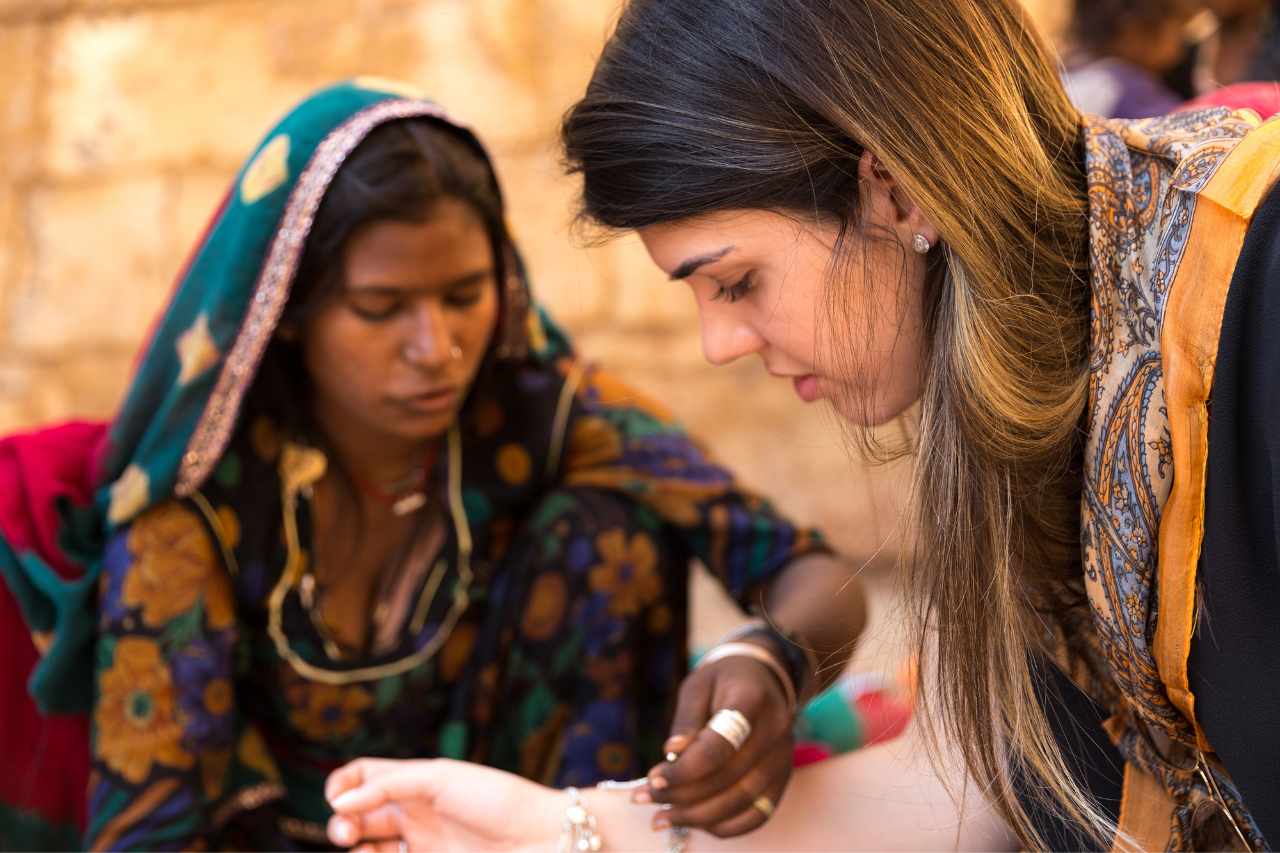
If you have been wondering what language Indians speak, the answer is not so simple. India is a multilingual country with a rich linguistic diversity. It consists of 28 states and 8 Union Territories, which have their own mother tongue.
The Eighth Schedule of the Indian Constitution recognizes 22 official Indian languages and around 1,576 rationalized languages. About 72 languages are taught in schools across India. However, one can find radio programmes being aired in over 146 languages and dialects.
But don’t let the numbers scare you. Most Indians know about 2-3 Indian languages, with a majority of youth speaking English as well, owing to the vast number of English medium schools.
I personally speak 4 languages — Bengali, which is my mother tongue, English, Hindi and Tamil, since I reside in Chennai and my husband is a Tamilian. And since I know both Bengali (West Bengal) and Hindi, I can also follow the basics of Bhojpuri (Bihar), Assamese (Assam) and Oriya (Odisha). This is because there are a lot of similarities in the languages that are spoken in these neighboring states.
Now let us take a quick look at the origin of Indian languages, before I unveil some simple tricks to mastering the official languages of India.
TWT Trivia: According to current statistics based on a report by the People’s Linguistic Survey Of India (2017), our population of 1.486 billion speaks around 780 languages (including dialects)!
Tracing The Origin Of Indian Languages
The Indian languages can be broadly classified under 4 linguistic groups – Indo-Aryan Languages, Dravidian Languages, Austro-Asiatic, and Sino-Tibetian.
Most of the North Indian Languages and languages spoken in the Western and Eastern parts of India have an Indo-Aryan origin. This includes Indian languages such as Sanskrit, Hindi, Bengali, Oriya, Bihari, Punjabi, Marathi, Gujarati, Assamese, Rajasthani, Urdu, Kashmiri, Konkani, and others.
The main South Indian languages belong to the Dravidian Linguistic group. These include Tamil, Telugu, Kannada, Malayalam, Tulu, Konda, and others.
A small percentage of people speak languages that belong to the Austro-Asiatic, and Sino-Tibetian groups. These include languages like Mundari (Chota-Nagpur Plateau) and Mon-Khmer (Andaman & Nicobar Islands) from the Austro-Asiatic family and Meitei or Manipuri (Manipur) and Bodo (Assam & Meghalaya) from the Sino-Tibetan group.
An Overview Of Major Indian Languages Spoken In Each State
Below is a list of the 28 states and 8 Union Territories of India along with the main Indian languages spoken in each. A quick glance at this table can help you to understand what language the people of India speak in various regions.
| S. No. | State | Capital | Main Language |
| 1 | Andhra Pradesh | Amaravati | Telugu |
| 2 | Arunachal Pradesh | Itanagar | Nishi, Adi, Apatani & others |
| 3 | Assam | Dispur | Assamese |
| 4 | Bihar | Patna | Hindi, Bhojpuri, Maithili, Magadhi |
| 5 | Chhattisgarh | Raipur | Hindi |
| 6 | Goa | Panaji | Konkani, Marathi |
| 7 | Gujarat | Gandhinagar | Gujarati |
| 8 | Haryana | Chandigarh | Hindi, Punjabi |
| 9 | Himachal Pradesh | Shimla | Hindi, Pahari languages like Kumaoni & Garhwali, Nepali |
| 10 | Jharkhand | Ranchi | Hindi, Bihari languages like Bhojpuri, Maithili, & more |
| 11 | Karnataka | Bengaluru | Kannada |
| 12 | Kerala | Thiruvananthapuram | Malayalam |
| 13 | Madhya Pradesh | Bhopal | Hindi, Marathi |
| 14 | Maharashtra | Mumbai | Marathi, Hindi |
| 15 | Manipur | Imphal | Meitei |
| 16 | Meghalaya | Shillong | Khasi |
| 17 | Mizoram | Aizawl | Mizo, English |
| 18 | Nagaland | Kohima | Naga languages, English |
| 19 | Odisha | Bhubaneshwar | Odia |
| 20 | Punjab | Chandigarh | Punjabi, Hindi |
| 21 | Rajasthan | Jaipur | Rajasthani, Hindi, Marwari |
| 22 | Sikkim | Gangtok | Nepali, Hindi, Bhutia, Lepcha |
| 23 | Tamil Nadu | Chennai | Tamil |
| 24 | Telangana | Hyderabad | Telugu, Urdu |
| 25 | Tripura | Agartala | Bengali |
| 26 | Uttar Pradesh | Lucknow | Hindi |
| 27 | Uttarakhand | Dehradun | Hindi |
| 28 | West Bengal | Kolkata | Bengali |
| S. No. | Union Territory | Capital | Main Language |
| 1 | Andaman & Nicobar Island | Port Blair | Hindi, Bengali, Tamil, Telugu, Malayalam |
| 2 | Chandigarh | Chandigarh | Hindi, Punjabi |
| 3 | Dadra and Nagar Haveli and Daman & Diu | Daman | Gujarati, Hindi |
| 4 | Delhi | Delhi | Hindi, Punjabi |
| 5 | Ladakh | Leh | Kashmiri |
| 6 | Lakshadweep | Kavaratti | Malayalam, Dhivehi |
| 7 | Jammu & Kashmir | Srinagar & Jammu | Kashmiri |
| 8 | Puducherry | Puducherry | Tamil, French, English |
What Is The Official Language Of India?
According to the Indian Constitution, Hindi and English are the official languages of India. Owing to 89 years of British colonial rule and considering the requirement to maintain international relationships, English was retained as the official language.
More than 10% of Indians speak English, making it a prominent language of communication not only in educational institutions, but also in business and corporate settings.
On the other hand, since Hindi is the most widely spoken language in India, (about 43% of the population speak Hindi), it is rightfully declared as the official language of India, alongside English.

10 Interesting Facts About Indian Languages You Might Want To Know
1. The Indian Central Government recognizes Hindi and English as the official languages in India. However, each state has the liberty to decide its own official language.
2. The only 2 states that have registered English as their only official language are Arunachal Pradesh and Nagaland.
3. Bengali is the second most spoken language in India after its official language, Hindi.
4. Sanskrit and Tamil are the oldest Indian languages that originated in the 3rd century B.C., making them two of the oldest languages in the world as well.
5. All languages in India are given equal importance and respect. Hence, as per the Indian Constitution, India does not have a national language.
6. Tamil, Sanskrit, Kannada, Telugu, Malayalam and Odia have been bestowed the prestigious designation of being Classical Languages by the Indian Government. These 6 languages have extensive ancient literary works and do not bear the heavy influence of other languages.
7. Hindi stands as the 3rd most spoken language in the world with over 602 million speakers. Bengali is in the 7th position, with over 272 million speakers worldwide.
8. Telugu was referred to as the ‘Italian Of The East’ by 19th-century Englishmen as all its words end with a vowel sound such as Dhanyavadalu (Thank You), Mancidi (good) etc.
9. The origin of most Indian language scripts can be traced back to the Brahmi Script, which is one of the oldest scripts dating back to around 500 B.C.
10. Sanskrit studies are offered in renowned universities around the world, including both Oxford and Harvard Universities.
Tips To Communicate With Indian Locals As A Foreign Tourist
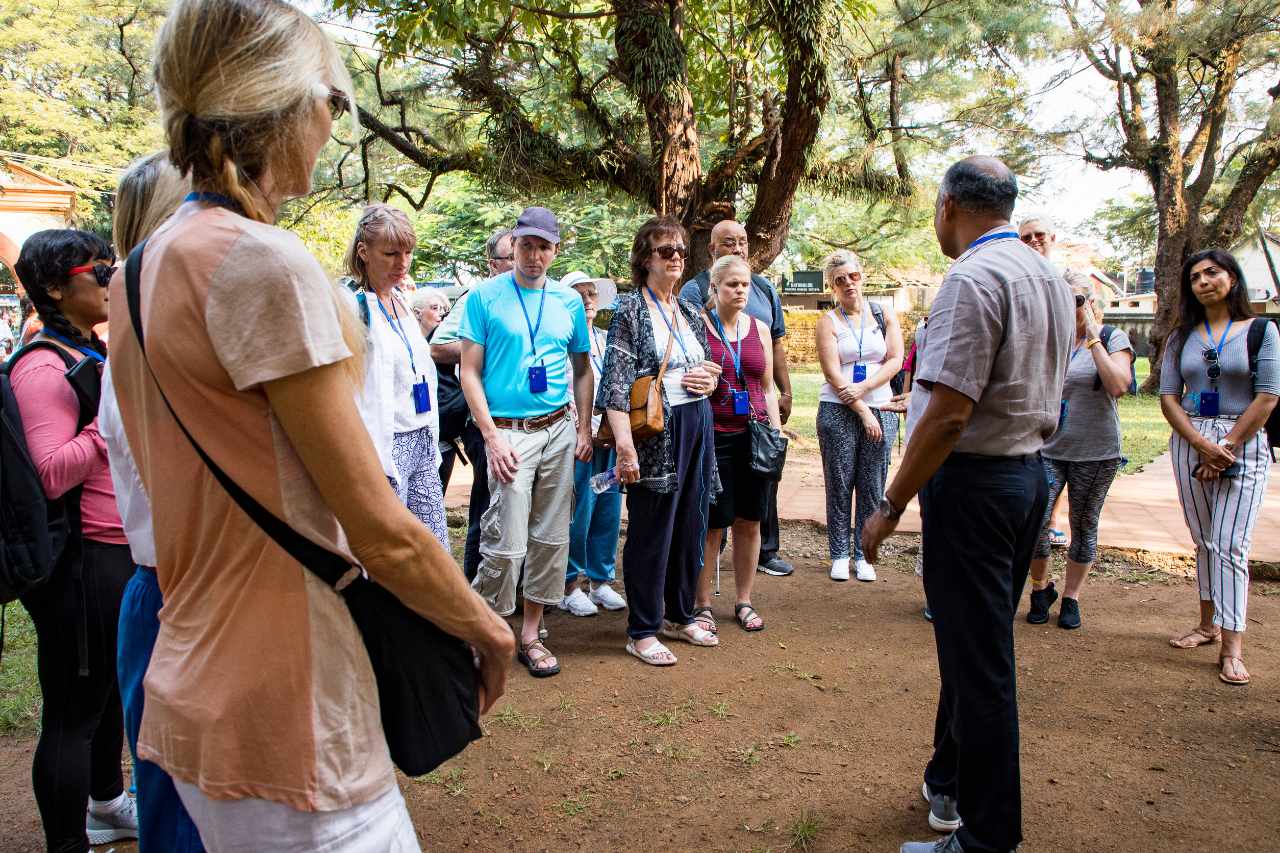
English is widely spoken in India, but learning a few basic phrases in the regional languages can help you converse more easily with locals.
Greeting by saying a warm ‘Namaste’ and joining your hands is considered a polite gesture in India. These basic gestures and phrases in the local Indian language can help you bond better with the locals.
What I discovered during my travels across India, is that most states in North, East and West India speak Hindi. Hence, learning some basic Hindi phrases can be useful when you are traveling to places like Himachal Pradesh, Delhi, Rajasthan, Madhya Pradesh, Orissa, Mumbai or Goa.
In addition to their local languages, North-East Indians from states such as Manipur, Meghalaya and Assam are fluent in both Hindi and English. It is common to encounter many people from these regions working in various sectors in cities like Kolkata, Delhi, Hyderabad or Chennai, where they fluently converse in English.
However, the scenario slightly changes when you travel down South. Though Metropolitan cities like Hyderabad and Bangalore speak Hindi and English besides their local languages, states like Tamil Nadu and Kerala predominantly converse in local languages more than English. Hence, knowing a few phrases in Tamil or Malayalam can be useful to converse with auto drivers and taxi drivers.
The situation is quite similar if you are planning to tour West Bengal or visit Kolkata during the Durga Puja festival. While Hindi is comprehensible to almost everyone, making the effort to learn and converse in Bengali often evokes an enthusiastic response from the locals.
You may even find them eager to help you with directions and suggestions when you ask them in their local language.
TWT Tip: In most Indian cities you can book a cab/auto using the Uber or Ola app. This is an easy way to commute in India as you can clearly check the route on Google Maps.
Situation-Specific Conversation Examples in Local Indian Languages
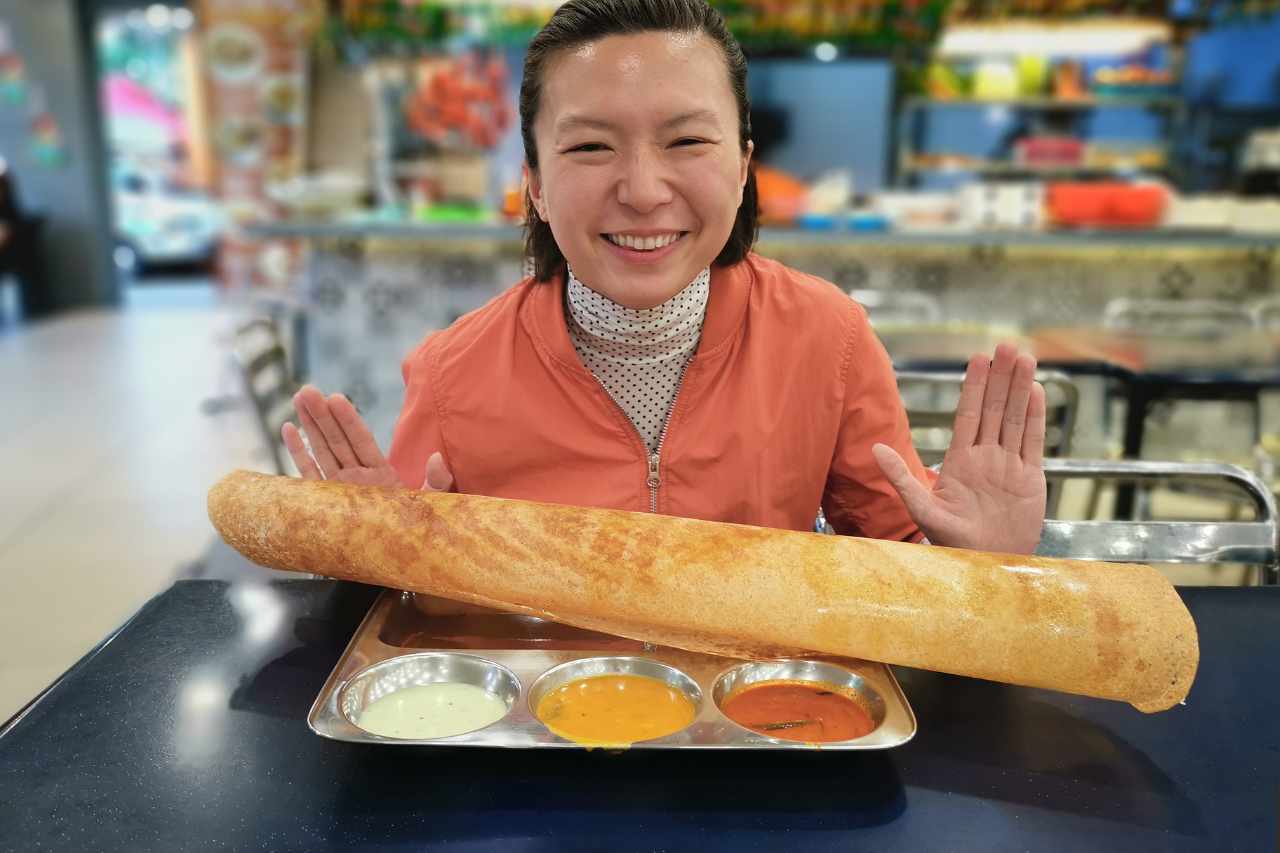
10 years ago, when I first traveled to Chennai from Kolkata, I remember wandering around with a pocket notebook containing essential Tamil phrases for engaging with the locals. These included greetings and primarily situation-based conversations.
This was a time when Google Translate wasn’t as effective and often made literal translations that didn’t align with the way people actually expressed in their language. So whenever I got the chance, I consulted my hostel owner and jotted down basic conversations that would help me travel in a bus, order food, ask for directions, or bargain at a shop.
Reflecting on those experiences, I have added this section to offer you a reference guide you can refer to, whenever you find yourself in similar situations.
Greetings and Basic Phrases:
| English | Hindi | Bengali | Gujarati | Telugu | Kannada | Tamil | Malayalam |
| Hello! | Namaste | Nomoskar | Nmaste/ Jai Shree Krishna | Halo | Namaskara | Vanakam/ Namaskaram | Namaskaaram |
| How are you? | Aap kaise hain? | Apni kemon achen? | Tame kem cho? | Miru ela unnaru? | Nivu hegiddiri? | Neenga eppidi irukinga? | Sugamano? |
| I am fine | Hum theek hain (I am fine) / Hum achhe hain (I am good) | Ami bhalo achi | Hu majama chu/Hu theek chu | Nenu bagane unnanu | Nanu chennagiddene | Naan nalla irruken | Enikk sugamano |
| Thank you | Dhanyavad | Dhonyobad | Tamaru abhaar | Dhanyavadalu | Dhanyavada | Nandri | Nanni |
Ordering Food:
| English | Hindi | Bengali | Gujarati | Telugu | Kannada | Tamil | Malayalam |
| What would you like to order? | Aap kya order karna chahate hain?/ Kya chahiye? | Apni ki order korte chan?/ Ki debo? | Tame shu mangavvanu pasand karsho? | Miru emi orḍar chestaru? | En order madak ishta ninge? | Ungalukke enna venum? | Enthanu Kazhikyan edukende? (What would you like to have) |
| I’d like to order a plate of Biryani/ Please give a plate of Biryani. | Ek plate Biryani dijiye. | Ek plate Biryani din. | Ek plate biryani apo. | Oka plate biryani ivvandi. | Biryani plate kodu. | Oru plate Biryani kudunga. | Chetta, oru plate Biryani. |
Planning to visit India soon? Reserve your stay at one of the top hotels!
In Local Transport:
| English | Hindi | Bengali | Gujarati | Telugu | Kannada | Tamil | Malayalam |
| Where do you want to go? | Aap kaha jana chahate hain? | Apni kothay jete chan? | Kya javu che? | Ekkaḍiki velthunav? | Ninu ellige hogabeku? | Ungaluku enge ponum? | Evide pokanam? |
| I want to go to the museum. | Mujhe museum jana hain. | Ami museum e jete chai. | Maare museum javu che. | Nenu museum vellali. | Nanu myusiyange hogalu bayasuttene. | Ennaku museum ponum. | Enikku musiyathil pokanam. |
| I want to get down at the next stop. (In a bus/tram) | Mujhe agle stop pe utarna hai. | Ami porer stop e nambo. | Mare aagal na stop pan utarvu che | Nenu next sṭop lo digali. | Nanu mundina nildanadalli iliyalu bayasuttēne | Ennaku next stop le eranganum. | Enikku adutha stoppil iranganam. |
| Will you take me to the airport? (while hiring a cab/auto) | Bhaiya (brother) airport chalenge? | Dada airport jaben? | Airport jasho? | Miru nannu airport tiskeltara? | Nīvu nannannu vimāna nildāṇakke karedoyyuttīrā? | Airport varingala? | Chetta Airport drop cheiyumo please (will you drop me at the airport?) |
| Please stop the car/auto. | Bhaiyya gadi/ auto rokiye. | Dada gadi/ auto ta thaman. | Ahiya roko. | Car/auto apeyandi. | Dayavittu car/auto nillisi. | Anna car/auto nirthinga. | Chetta ivide nirthu please |
Asking For Directions:
| English | Hindi | Bengali | Gujarati | Telugu | Kannada | Tamil | Malayalam |
| Where is the railway station? | Railway station kaha hai? | Railway station ta kothay/ kon dike? | Railway station kya che? | Railway station ekkada undi? | Railway station ellide? | Railway station enge irruke? | Railway station evideyaanu? |
| How can I reach the airport? | Airport kaise jayen? | Airport ki kore jabo? | Airport kevi ritey pochi shaku/javaashe? | Airport ki ela vellali? | Nanu airport hege talupabahudu? | Airport eppadi ponum? | Airportileku engane poganam? |
Enquiring Prices:
| English | Hindi | Bengali | Gujarati | Telugu | Kannada | Tamil | Malayalam |
| How much does this cost? | Yeh kitne ka hai? | Etar dam koto? | Ani kimmat ketli che? | Idi entha? | Idakkestu bele? | Idhu yevelo? | Ithinu enthu vila varum? |
| Can you reduce the price a little? | Thoda kam kijiye. | Dam ta ektu koman/ Dam ta ektu kom korun | Aano bhaav/kimmat thodo occhi kari aapo ne? | Konchem tagginchandi | Svalpa kadime madi. | Konjo kami pannalame | Vila kurachu kurakumo. |
Note: Hindi is widely spoken across India, while tourist destinations like Rajasthan, Goa, Pondicherry, North East, etc. see a huge number of foreign tourists. Thus, most people in the tourism business, including guides and auto drivers, can speak English in these places.
Basic Hindi Words You Need To Know As A Foreign Tourist In India

Here is a list of a few more simple Hindi words and compliments that can come in handy while you tour the Hindi-speaking states in India:
- Bas – Enough
- Haan – Yes
- Thik hai – Okay
- Nahi – No
- Nahi chahiye – I don’t want
- Phir milenge – We’ll meet again
- Mujhe Hindi nahi malum/nahi aati – I don’t know Hindi
- Bohut shukriya – Thank you so much
Book your stay in India here!
TWT Summary
As a multilingual country, India provides its travelers with a huge scope to explore, learn, and embrace unity amid diversity. The multitude of languages spoken in India is not just a means of communication. Each is a living testament to ancient cultures and a rich historical past.
And though the people of India speak varied languages, one can easily notice that the expression of emotions transcends language barriers and bears striking similarities. In fact, if you are familiar with other Asian languages such as Japanese, Korean and more, it is fascinating to observe that in most situations only the words differ but the expressions remain the same.
So if you have been curious about what language the Indians speak, or are planning a trip to India sometime soon, we hope that this article has given you a quick cultural insight into this multilingual country.
Frequent Traveler? Here’s Some More Travel Goodness From Us:

